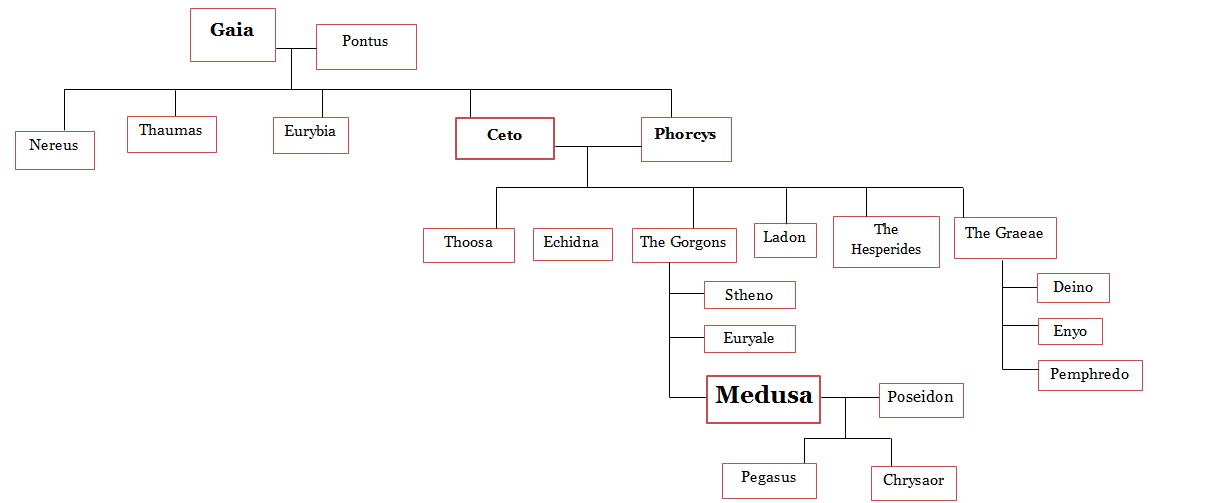How and why was Medusa turned into a Gorgon with snakes for hair?
The story of Medusa has instilled fear ever since it was heard for the first time. There have been different variations of the story but none has failed to terrify men than the ones that involved her turning the men that glanced upon her into stone.

“Medusa” by Swiss painter Arnold Böcklin, circa 1878
The following explains the origin story and the meaning of Medusa, the terrifying gorgon in Greek mythology:
The Story of Medusa’s Transformation
Medusa was originally a beautiful maiden, renowned for her gorgeous hair. There are different versions of the myth, but one of the most well-known involves the goddess Athena.
Medusa, who served as a priestess in Athena’s temple, caught the eye of the sea god Poseidon. The two were intimate inside the temple of Athena, which was a significant act of disrespect to the virgin goddess Athena.
In her fury, instead of punishing Poseidon, Athena turned Medusa’s beautiful locks into snakes and made her face so terrifying that anyone who gazed upon her would be turned to stone.
With this transformation, Medusa became one of the Gorgons, though her sisters, Stheno and Euryale, were immortal Gorgons from birth.
READ MORE: The Myth of Medusa and Poseidon
Alternative version
In some versions of the myth, the focus is more on Medusa’s vanity. In these interpretations, Medusa boasts that her hair is more beautiful than Athena’s. Offended by Medusa’s audacity, Athena turns her hair into snakes.

The Significance of Medusa’s Transformation
The tale of Medusa’s transformation underscores several themes in Greek myths.
- The desecration of a deity’s temple was a grave offense. Medusa’s punishment is a testament to the importance of respecting sacred spaces and the gods’ authority.
- Medusa’s transformation from a beauty to a monster underscores the transient nature of physical beauty and the dangers of pride or vanity associated with it.
- Gods and goddesses in Greek mythology often acted based on personal affronts and whims, and mortals were usually the ones to bear the brunt of their displeasure, even if the gods themselves were involved in the transgressions.
- Medusa’s fate and the consequences she suffered emphasize the importance of humility and the overarching dominance of the gods in ancient Greek beliefs.
Questions & Answers

An embossed plaque in the Art Nouveau style from 1911
Who was Medusa before she became a Gorgon?
Before she became a Gorgon, Medusa was a beautiful mortal woman. A priestess in the temple of Athena, Medusa was renowned for her beauty, especially her long, flowing hair which was said to be her most attractive feature.
As Athena was famed for being one of three chaste goddesses, all her priestesses were required to take a vow of chastity. Therefore, Medusa took the vow.
What was the reason Perseus set out to behead Medusa, and how did he achieve this feat?
King Polydectes of Seriphos desired to marry Perseus’ mother, Danaë. However, Perseus was protective of his mother and was an obstacle to the king’s intentions. To get rid of Perseus, King Polydectes devised a plan. He held a banquet where all attendees were to bring a gift, supposedly for his intended bride. Perseus, who was poor and couldn’t afford a gift, rashly promised the king anything he desired. Polydectes, seizing this opportunity, demanded the head of Medusa, knowing the almost certain death that would face anyone attempting to get it.

With divine intervention and assistance, Perseus was able to behead Medusa. For example, with Hermes’ winged sandals, Perseus was able to fly, aiding in his journey to the Gorgons’ lair and his escape. Athena reflective shield allowed the hero to see the terrifying gorgon without looking at her directly. All that while he was donning Hades’ Helm of Darkness, which made him invisible.
After beheading Medusa, he had to quickly escape from the other Gorgons, Stheno and Euryale, who pursued him. With the help of the winged sandals and the helm, he evaded them.
Perseus also had a magic satchel, in which he placed the severed head of Medusa in.
After her death, which mythical creature emerged from Medusa’s body?
After Perseus beheaded Medusa, the winged horse Pegasus and the golden-sword-wielding giant Chrysaor emerged from her body. They were the offspring of Poseidon and Medusa, conceived during their union in Athena’s temple, which was the event that led to Medusa’s transformation into a Gorgon by Athena.

At the time of Medusa’s death, the petrifying Gorgon was pregnant with the offspring of Poseidon. Image: Perseus with the Head of Medusa, Benvenuto Cellini (1554)
How was Medusa’s severed head used by Perseus after her death?
Medusa’s severed head retained its power to turn anyone who looked upon it directly into stone. Perseus utilized this power in several ways after her death:
Protection against Enemies
During his journey back from the Gorgon’s lair, Perseus encountered various foes. He used the head to turn them into stone, including the titan Atlas.
When Atlas refused to help Perseus, he showed him the head, transforming the titan into a mountain range.
READ MORE: Daughters of the Greek Titan Atlas
Rescue of Andromeda
On his way back home, Perseus came across Andromeda, who was chained to a rock as a sacrifice to the sea monster Cetus. To save her, Perseus used Medusa’s head to turn the monster into stone.
Vengeance against Polydectes
Upon returning to Seriphos, Perseus discovered that King Polydectes had mistreated his mother Danaë in his absence. In retaliation, Perseus confronted the king and his courtiers, unveiling Medusa’s head and turning them all to stone.
Gift to Athena
After avenging his mother and fulfilling his quest, Perseus offered Medusa’s head to the goddess Athena as a gesture of gratitude for her assistance. Athena placed the head on her shield, the Aegis, as a protective emblem.
After these events, Medusa’s head continued to symbolize a potent protective force in Greek mythology, especially in its association with Athena’s shield.

Medusa in Greek mythology



























